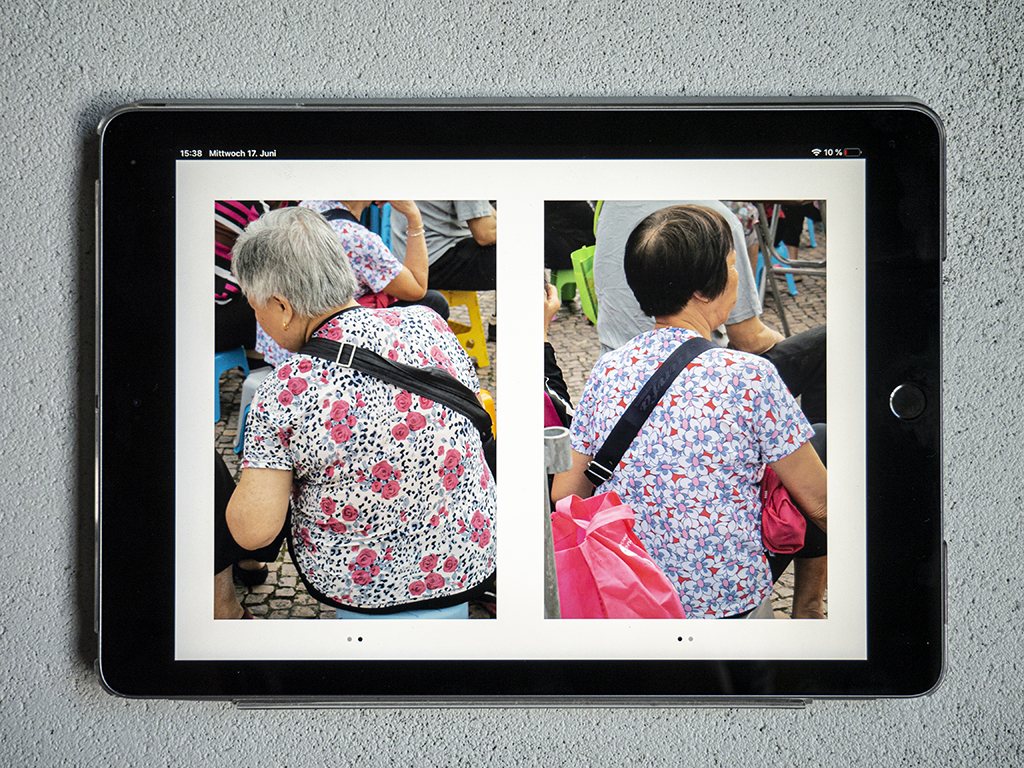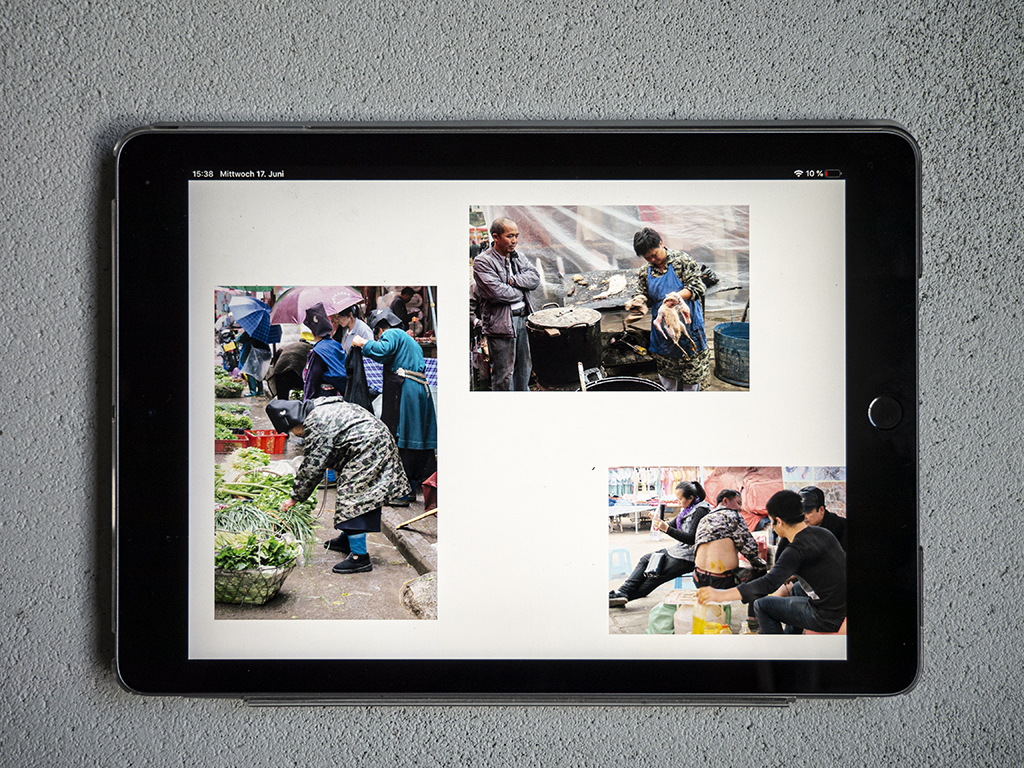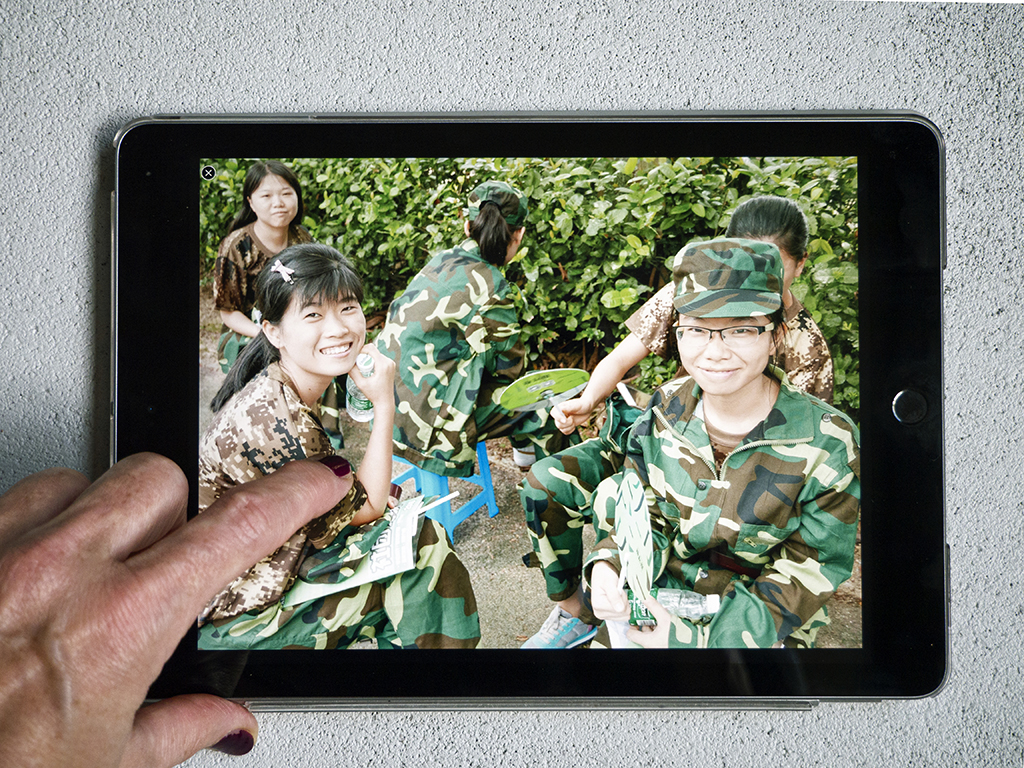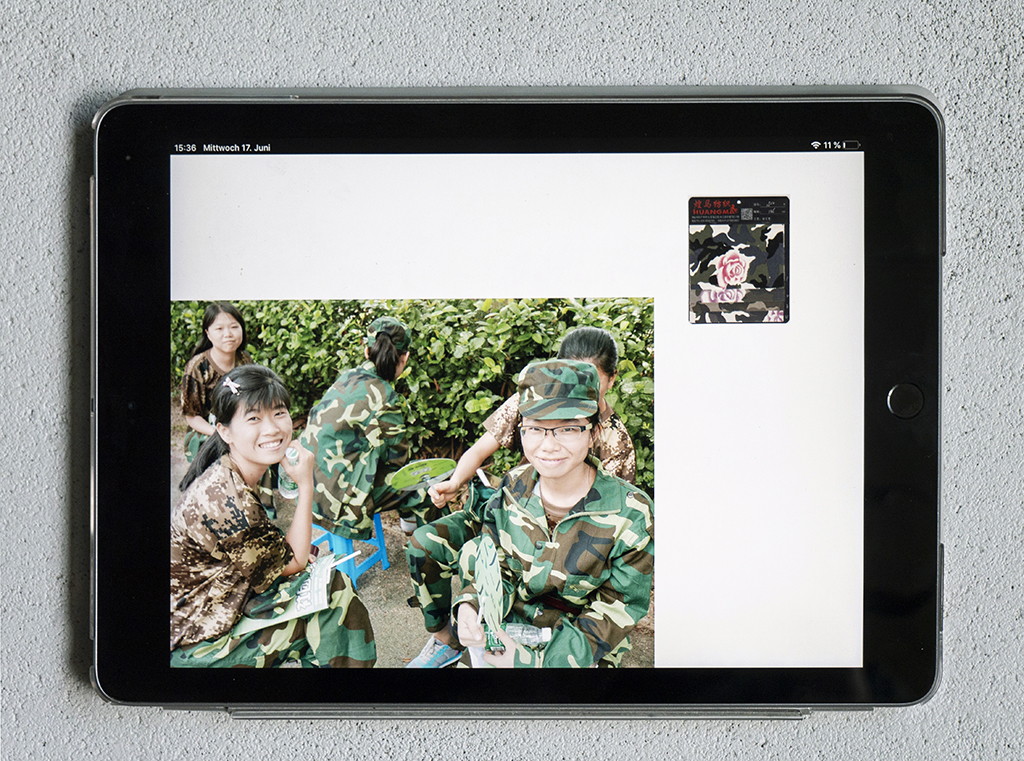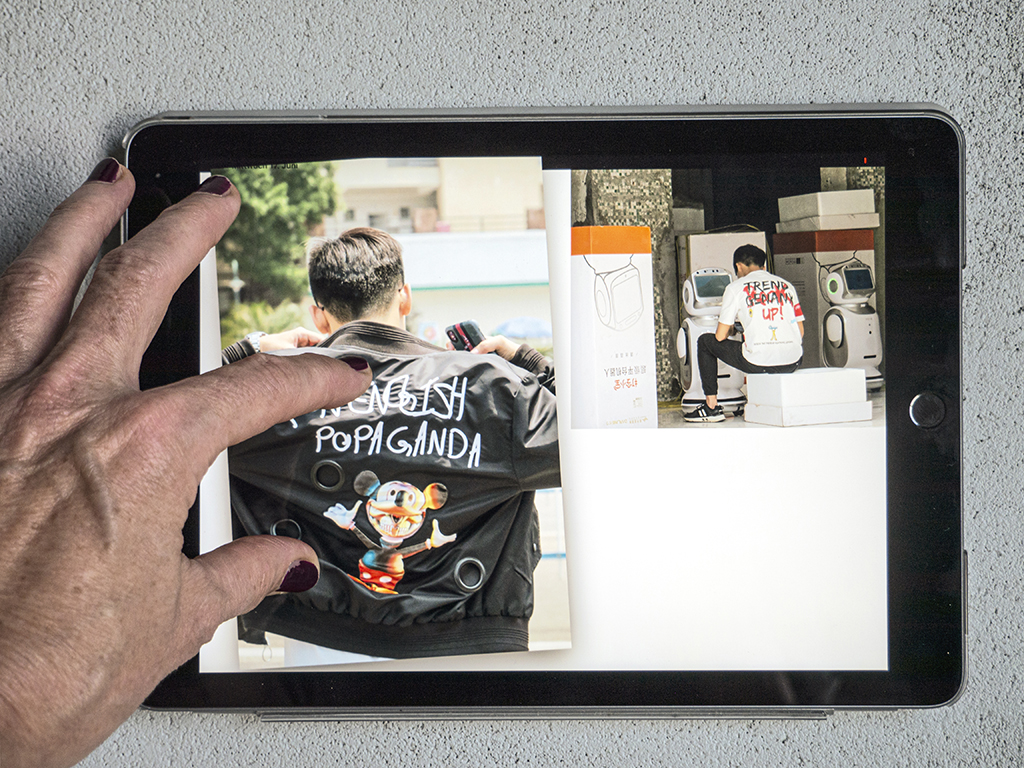Janine Sack, publisher and designer
Chinese Weave, by Regine Steenbock, e-published by Eeclectic, printed version published by Textem Verlag, Hamburg, 2020

Chinese Weave is a photography book by Regine Steenbock, an artist and fashion designer who travels and engages in research. We follow her gaze on a country that in the so-called West is permanently present as a myth, a politically dubious player, and an economic threat. At the same time, China seems unfamiliar and difficult to decipher. In around 350 pictures, aspects of the textile culture and business world are shown, just as they are found in everyday life. For thirteen months, Regine Steenbock captured impressions on a visual and textile research expedition in southern China. She wandered her way through textile mass production for the world market in the Pearl River delta and discovered, in startingly coexistence, the highly elaborated traditional textile culture and contemporary fashion of the Miao and other Chinese minority groups 1300 kilometers inward in Guizhou. Mythological treatment of the past encounters a hopeful faith in progress; politics controlled from afar encounters local anarchy. Organized in thematic chapters, this book presents the essence of an extensive archive of visual material created between 2016 and 2018, complemented by commentaries that explain the specific contexts in informative ways.
The e-book also includes around 15 brief videos.
On which fields of knowledge are you focused?
Publishing, Visual Culture, Editorial Design.
What is the object of your research?
Publishing as social practice.
Could you identify some constants in your work?
I would say I have always worked around the relation of text and image. Mostly to investigate and undermine their fixed attributions and meanings. As an artist, I analyzed artistically notions of identity and gender in terms of their social construction and media representation. As designer and publisher my guiding interest is the search for the inherent connection of form and content.
How did you find out about Aby Warburg’s work?
Having lived in Hamburg, Aby Warburg’s name was a somewhat present, without me really knowing about his work. Until not so many years ago, when I came across his name again and again, realizing how much I have dealt with the legacy of his ideas and work for all my working life since studying at the Art Academy in Hamburg. His rearrangements of canonized images, are a lasting source of enabling everyone to re-read and freshly re-connect to images and their cultural, social and historical implications.
How would you define an Atlas?
A proposal to read the world.
Atlas as a conceptual, formal and mnemonic device; do you use it in your work?
Yes. Mostly for parts of work which are still unclear to me, which need to be developped in the back of my head…
Do you know about the existence of Mnemotechnics?
Yes.
Which mnemonic system guides the organization of your material?
I am not sure.
Are there visual and emotional formulas (pathosformeln) in the project you present here?
Yes. Visual formulas are very present especially in the chapters about the performed rituals.
In your work, what is the balance between image and text?
The leading element are the images, in which the associative, multifaceted narration unfolds. The text adds suggestions to read the images.
Thinking about Warburg’s ‘good neighborhood rule’, what are the books that underpin your project?
Right now what comes to my mind:
Bridget Smith, Society, Mack, London
Johannes Schwartz, The Athens Recorder, Roma Publications, amsterdam
Patrizia Bach, Arcades-Work, Revolver Publishing, Berlin
(as online publication: http://benjamin-passagen.de/)
Vera Tollmann, China. Der deutschen Presse Märchenland 2, self-published, Berlin
Kleiner Stimmungsatlas in Einzelbänden (Serie), Textem Verlag, Hamburg
Erik Göngrich, Atlas of Sculptural Situations, EECLECTIC, Berlin
Forschungsgruppe Mnemosyne und 8. Salon, Aby Warburg. Mnemosyne Bilderatlas, Kartoffelverlag; Universal-futur-Bitch-press; ZKM | Zentrum für Kunst und Medien Karlsruhe
